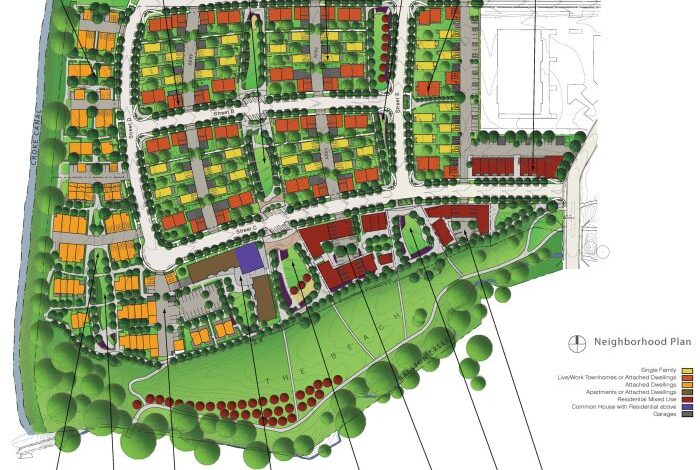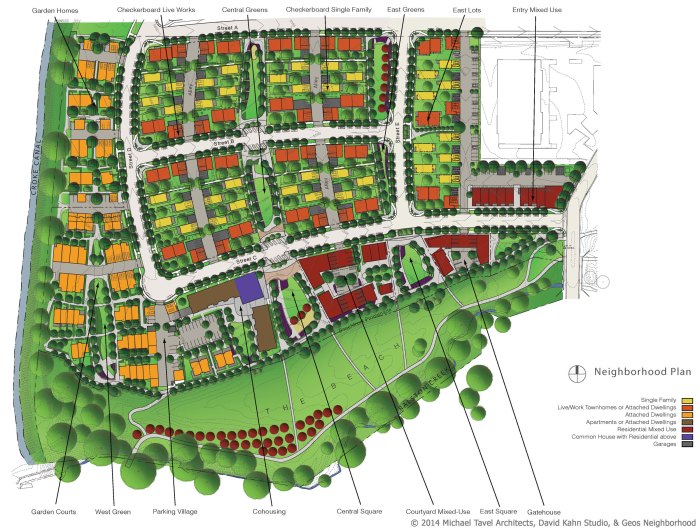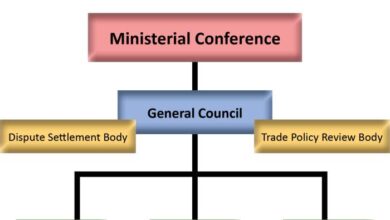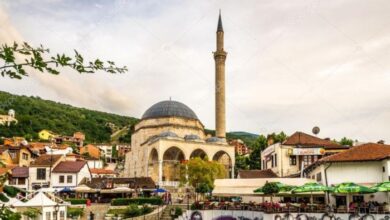
A Model for Neighborhood Renewal: Revitalizing Communities
A model for neighborhood renewal is a blueprint for revitalizing communities that have fallen into disrepair. This process involves addressing a multitude of challenges, from economic decline and dilapidated housing to social issues and a lack of community engagement.
By implementing a comprehensive plan that tackles these issues head-on, neighborhoods can be transformed into vibrant and thriving spaces where residents can prosper.
The journey towards neighborhood renewal requires a collaborative effort involving local governments, community organizations, businesses, and residents themselves. By working together, stakeholders can develop strategies to improve housing conditions, create job opportunities, enhance public spaces, and foster a sense of belonging.
This collaborative approach is essential for creating sustainable change and ensuring that the benefits of renewal are felt by all members of the community.
Defining Neighborhood Renewal
Neighborhood renewal is a multifaceted process aimed at revitalizing and improving the social, economic, and physical conditions of distressed neighborhoods. It encompasses a range of strategies and interventions designed to address the challenges that hinder community development and well-being.
Objectives of Neighborhood Renewal Initiatives
Neighborhood renewal initiatives are driven by a set of overarching objectives, aiming to achieve positive and lasting change in struggling communities. These objectives include:
- Improving Housing Quality:Neighborhood renewal programs often focus on improving the quality and affordability of housing options. This may involve rehabilitating existing housing units, constructing new affordable housing, or providing financial assistance to homeowners for repairs.
- Stimulating Economic Development:Revitalizing local economies is a key objective. This can be achieved by attracting new businesses, supporting existing small businesses, creating job opportunities, and promoting entrepreneurship.
- Enhancing Public Safety:Neighborhood renewal efforts often include strategies to reduce crime and improve public safety. This may involve increasing police presence, implementing community policing programs, and addressing the root causes of crime, such as poverty and lack of opportunity.
- Improving Public Infrastructure:Investing in public infrastructure, such as parks, libraries, schools, and transportation systems, is crucial for improving the quality of life in neighborhoods. These improvements can enhance community amenities, promote social interaction, and facilitate economic growth.
- Strengthening Community Capacity:Neighborhood renewal programs aim to empower residents and build community capacity. This involves fostering community engagement, providing resources and support to local organizations, and promoting resident leadership.
Factors Contributing to Neighborhood Decline
Neighborhood decline is a complex phenomenon driven by a confluence of factors that can undermine community well-being and lead to social and economic hardship. These factors include:
- Economic Disadvantage:High poverty rates, unemployment, and limited access to good-paying jobs can contribute to neighborhood decline. These factors can lead to housing instability, reduced access to quality education and healthcare, and increased crime rates.
- Housing Deterioration:Poor housing conditions, such as overcrowding, lack of maintenance, and inadequate infrastructure, can negatively impact residents’ health and well-being. It can also create a cycle of disinvestment and neglect, further contributing to neighborhood decline.
- Social Disorganization:High levels of crime, social isolation, and lack of community cohesion can create an environment of fear and instability. This can discourage investment, limit economic opportunities, and hinder community development.
- Environmental Hazards:Exposure to environmental hazards, such as pollution, contaminated water, and inadequate sanitation, can have serious health consequences and negatively impact property values. These factors can further contribute to neighborhood decline.
- Lack of Investment:Insufficient public and private investment in neighborhoods can lead to infrastructure decay, limited economic opportunities, and declining property values. This can create a vicious cycle of disinvestment and neglect, exacerbating existing challenges.
Models for Neighborhood Renewal
Neighborhood renewal is a complex and multifaceted process that involves a range of strategies and approaches. Different models have emerged over time, each with its own strengths and weaknesses, and they are often tailored to the specific needs and circumstances of a particular neighborhood.
Examples of Successful Neighborhood Renewal Models
Successful neighborhood renewal models often involve a combination of approaches, including physical improvements, economic development, community engagement, and social services. Here are a few examples:
- The New Urbanism Model: This model emphasizes creating walkable, mixed-use neighborhoods with a focus on public spaces, transportation, and community building. It aims to create a sense of place and encourage residents to live, work, and play within their neighborhoods. Examples of New Urbanist projects include the Seaside, Florida, development, and the Battery Park City neighborhood in New York City.
- The Enterprise Zone Model: This model uses tax incentives and other financial tools to attract businesses and create jobs in distressed neighborhoods. It aims to stimulate economic activity and create opportunities for residents. Examples of Enterprise Zones can be found in cities across the United States, including Detroit, Michigan, and Baltimore, Maryland.
A model for neighborhood renewal often involves community engagement and collaboration. It’s fascinating to see how these principles play out on a larger scale, like in the legal realm, where a judge has just denied Lindsey Graham’s appeal to delay testimony before the Georgia grand jury investigating Trump, as reported here.
This kind of decision-making process, where individuals are held accountable, is a crucial element in creating a just and equitable society, which is essential for successful neighborhood renewal.
- The Community Development Corporation (CDC) Model: CDCs are non-profit organizations that work to improve the quality of life in their communities through a variety of initiatives, including affordable housing development, job training, and community organizing. They often partner with local government, businesses, and residents to achieve their goals.
Examples of successful CDCs include the Local Initiatives Support Corporation (LISC) and the National Community Reinvestment Coalition (NCRC).
Key Components of a Model
A successful neighborhood renewal model requires a multifaceted approach that addresses the unique challenges and opportunities of each community. It is essential to consider a range of factors, including economic development, social equity, and physical infrastructure, to create a sustainable and thriving neighborhood.
A model for neighborhood renewal often involves revitalizing local economies, and that can be tricky in the face of rapidly evolving financial landscapes. Take, for example, the discussion on cnbc daily open bitcoin isnt really a currency yet , where the volatility and lack of widespread adoption raise questions about its long-term viability as a medium of exchange.
Neighborhood renewal needs to consider these shifts, ensuring that revitalization efforts are aligned with the evolving financial realities of the modern world.
Essential Components of a Comprehensive Model
A comprehensive neighborhood renewal model should include the following key components:
- Community Engagement:Active and meaningful participation of residents is crucial for identifying local needs, shaping project goals, and ensuring long-term sustainability.
- Economic Development Strategies:Programs aimed at creating jobs, supporting local businesses, and attracting investment are essential for economic revitalization.
- Housing and Infrastructure Improvements:Addressing issues like affordable housing, transportation, and public spaces can significantly enhance quality of life and attract new residents.
- Social Services and Education:Providing access to healthcare, education, and other social services is crucial for improving overall well-being and creating opportunities for residents.
- Public Safety and Crime Prevention:Strategies to address crime and improve public safety are essential for creating a safe and welcoming environment.
- Environmental Sustainability:Incorporating green infrastructure, promoting energy efficiency, and reducing environmental impact are important for long-term sustainability.
Community Engagement in Neighborhood Renewal
Community engagement is the cornerstone of successful neighborhood renewal efforts. It involves actively listening to residents’ concerns, incorporating their perspectives into project planning, and empowering them to become active participants in the revitalization process.
A model for neighborhood renewal often involves community engagement and collaboration, fostering a sense of shared responsibility. This is especially important in times of political upheaval, as evidenced by the recent retirement of a Secret Service official who was at the center of testimony about Trump’s actions on January 6th, a pivotal moment in American history.
Such events highlight the need for strong, unified communities to navigate challenging times and work towards a brighter future.
- Resident-Led Initiatives:Encouraging residents to take ownership of their community through resident-led organizations, community gardens, or neighborhood watch programs can foster a sense of belonging and collective responsibility.
- Community Meetings and Forums:Regular meetings and forums provide platforms for residents to voice their opinions, share ideas, and provide feedback on project proposals.
- Data Collection and Analysis:Engaging residents in data collection and analysis helps ensure that projects address actual community needs and priorities.
- Capacity Building:Providing training and resources to residents can empower them to lead community initiatives and advocate for their interests.
Effective Community Partnerships in Neighborhood Renewal Projects
Collaboration between community organizations, government agencies, and private sector partners is crucial for successful neighborhood renewal projects. These partnerships can leverage resources, expertise, and networks to achieve shared goals.
- Nonprofit Organizations:Community-based organizations often have deep roots in neighborhoods and can provide valuable insights into local needs and priorities.
- Government Agencies:Local, state, and federal agencies can provide funding, technical assistance, and regulatory support for neighborhood renewal projects.
- Private Sector Partners:Businesses, developers, and investors can contribute to economic development, housing improvements, and job creation.
Economic Development and Renewal: A Model For Neighborhood Renewal
Economic development is a crucial aspect of neighborhood renewal, as it fosters job creation, attracts investment, and improves the quality of life for residents. By creating a vibrant and sustainable economic ecosystem, revitalized neighborhoods can become more attractive to businesses, residents, and visitors alike.
Strategies for Promoting Economic Development
Promoting economic development in revitalized neighborhoods involves a multifaceted approach that addresses the unique needs and opportunities of each community.
- Business Development and Support: Offering incentives and resources to support the growth of existing businesses and attract new entrepreneurs is essential. This can include grants, loans, technical assistance, and business incubation programs.
- Job Creation and Training: Creating job opportunities through targeted workforce development programs, partnerships with local businesses, and skills training initiatives can help residents secure stable employment.
- Infrastructure Improvements: Investing in infrastructure, such as transportation, utilities, and public spaces, can enhance the attractiveness of a neighborhood for businesses and residents.
- Marketing and Promotion: Effective marketing campaigns can highlight the unique assets and opportunities of revitalized neighborhoods, attracting investment and encouraging tourism.
Impact of Job Creation and Business Development
Job creation and business development play a pivotal role in neighborhood renewal by:
- Increasing Economic Activity: New businesses and jobs generate economic activity, leading to increased tax revenue, consumer spending, and overall economic growth.
- Improving Resident Income and Quality of Life: Job opportunities provide residents with stable income, enhancing their quality of life and reducing poverty levels.
- Boosting Property Values: Economic development initiatives can increase property values, making neighborhoods more attractive for investment and homeownership.
- Creating a Sense of Community: Economic growth can foster a sense of community by providing residents with opportunities to work, shop, and socialize within their neighborhood.
Funding Sources for Economic Development Initiatives
Securing funding for economic development initiatives is essential for the success of neighborhood renewal projects.
- Government Grants and Loans: Federal, state, and local government agencies often offer grants and loans specifically designed to support economic development in distressed communities.
- Private Investment: Attracting private investment through tax breaks, incentives, and partnerships with developers can provide significant resources for neighborhood revitalization.
- Community Development Financial Institutions (CDFIs): CDFIs are non-profit organizations that provide financial services and loans to underserved communities, including those undergoing renewal.
- Philanthropic Organizations: Foundations and charitable organizations often support economic development projects in revitalized neighborhoods, providing grants and other forms of funding.
Housing and Infrastructure

A vibrant and thriving neighborhood requires not only economic opportunities but also a supportive environment for residents. This includes access to affordable housing and well-maintained infrastructure. Addressing these needs is crucial for attracting and retaining residents, fostering community engagement, and enhancing the overall quality of life.
Affordable Housing, A model for neighborhood renewal
Affordable housing is a critical component of neighborhood renewal, ensuring that residents have access to safe, decent, and affordable places to live. It plays a vital role in creating a diverse and inclusive community, preventing displacement, and promoting economic stability.
- Providing Housing Options for Diverse Incomes: Neighborhood renewal strategies should consider the needs of residents across various income levels. This can involve creating a mix of housing options, such as affordable rental units, mixed-income developments, and homeownership opportunities.
- Preserving Existing Affordable Housing: It’s essential to protect existing affordable housing stock from demolition or conversion to market-rate units. This can involve implementing rent control measures, providing financial incentives for landlords to maintain affordability, and expanding public housing programs.
- Addressing Housing Instability: Neighborhood renewal should focus on addressing factors that contribute to housing instability, such as homelessness, eviction, and overcrowding. This might involve providing support services, promoting tenant rights, and investing in housing rehabilitation programs.
Infrastructure Improvements
Revitalized neighborhoods need well-maintained infrastructure to support residents, businesses, and community activities. This includes investing in transportation, public spaces, utilities, and other essential services.
- Transportation Access: Improved transportation options are essential for connecting residents to jobs, education, healthcare, and other opportunities. This could involve expanding public transportation networks, creating bike lanes, improving pedestrian safety, and enhancing accessibility for people with disabilities.
- Public Spaces and Amenities: Investing in parks, community centers, libraries, and other public spaces fosters community engagement, promotes healthy lifestyles, and enhances the overall quality of life. This can involve revitalizing existing spaces, creating new parks and green spaces, and ensuring accessibility for all residents.
- Utilities and Infrastructure Maintenance: Reliable utilities, such as water, sewer, electricity, and broadband internet, are essential for modern living. Neighborhood renewal should prioritize maintaining and upgrading existing infrastructure, addressing aging utilities, and ensuring equitable access to essential services.
Innovative Housing and Infrastructure Solutions
- Tiny Homes and Micro-Units: Tiny homes and micro-units provide affordable and sustainable housing options, particularly in urban areas facing housing shortages. These compact homes offer a viable alternative for individuals and families seeking affordable living spaces.
- Modular and Prefabricated Housing: Modular and prefabricated housing can accelerate construction timelines, reduce costs, and offer greater design flexibility. These solutions are becoming increasingly popular for creating affordable and sustainable housing options in neighborhoods undergoing renewal.
- Green Infrastructure and Sustainable Design: Integrating green infrastructure elements, such as green roofs, rain gardens, and permeable pavements, can improve stormwater management, reduce heat island effects, and enhance neighborhood aesthetics. Sustainable design principles can minimize energy consumption, reduce waste, and promote resource conservation.
- Smart City Technologies: Smart city technologies, such as sensor networks, data analytics, and mobile applications, can optimize infrastructure management, enhance public safety, and improve transportation efficiency. These technologies can contribute to a more sustainable and responsive neighborhood environment.
Social and Cultural Renewal
Neighborhood renewal goes beyond bricks and mortar; it’s about revitalizing the social fabric and fostering a sense of community. Social and cultural renewal is crucial for creating vibrant, inclusive, and thriving neighborhoods.
The Role of Social Services in Neighborhood Renewal
Social services play a vital role in supporting residents and addressing challenges that hinder neighborhood revitalization.
- Access to Healthcare:Ensuring affordable and accessible healthcare services is crucial for improving health outcomes and overall well-being. This includes providing mental health services, substance abuse treatment, and preventative care programs.
- Education and Job Training:Investing in quality education and job training programs empowers residents with the skills and knowledge they need to succeed in the workforce. This can include early childhood education, adult literacy programs, and vocational training initiatives.
- Social Support Networks:Establishing strong social support networks is essential for creating a sense of belonging and community. This can involve community centers, senior citizen programs, and youth outreach initiatives.
These services can address poverty, unemployment, and social isolation, which are often interconnected and can hinder neighborhood progress.
The Impact of Education and Community Development on Neighborhood Revitalization
Education and community development are interconnected and play a significant role in neighborhood revitalization.
- Quality Education:Access to quality education is fundamental for breaking the cycle of poverty and fostering economic mobility. It equips residents with the knowledge, skills, and critical thinking abilities needed to succeed in a changing economy.
- Community Development:Community development initiatives empower residents to take ownership of their neighborhoods and work together to address challenges. This can include community gardens, neighborhood watch programs, and youth leadership initiatives.
By investing in education and community development, neighborhoods can create a more resilient and sustainable future for their residents.
Strategies for Promoting Cultural Revitalization in Neighborhoods
Cultural revitalization is about celebrating and preserving the unique character and heritage of a neighborhood. It can involve:
- Arts and Culture Programs:Supporting local artists, musicians, and cultural organizations can enhance neighborhood vibrancy and attract visitors. This can include public art installations, community theaters, and cultural festivals.
- Historic Preservation:Preserving historic buildings and landmarks can help preserve the neighborhood’s cultural identity and attract tourists. This can involve restoration projects, heritage tours, and historical preservation programs.
- Community Storytelling:Encouraging residents to share their stories and experiences can help preserve the neighborhood’s history and build a sense of community. This can include oral history projects, community archives, and storytelling events.
Cultural revitalization can create a sense of place, attract investment, and foster a strong sense of community pride.
Sustainability and Long-Term Success
Neighborhood renewal projects aim to not only improve the physical environment but also foster sustainable development that benefits communities for years to come. This requires a comprehensive approach that considers the economic, social, and environmental factors that contribute to a thriving neighborhood.
Indicators of Long-Term Success
Measuring the long-term success of neighborhood revitalization is crucial to assess the effectiveness of interventions and ensure continued progress. Key indicators that provide valuable insights into the sustainability and impact of renewal projects include:
- Property Values and Homeownership Rates:Increasing property values and homeownership rates are positive indicators of a revitalized neighborhood. Rising property values signal increased demand and investor confidence, while higher homeownership rates contribute to community stability and resident engagement.
- Economic Activity and Job Creation:A thriving economy is essential for long-term success. Measuring the growth of local businesses, employment rates, and the creation of new jobs provides insights into the economic vitality of a neighborhood.
- Crime Rates and Public Safety:Reduced crime rates and improved public safety are essential for creating a desirable and livable environment. Tracking crime statistics and resident perceptions of safety provide valuable insights into the effectiveness of community policing and crime prevention initiatives.
- Resident Satisfaction and Quality of Life:Assessing resident satisfaction with the quality of life in a neighborhood is crucial. This can be measured through surveys, community meetings, and other feedback mechanisms that capture residents’ perspectives on factors such as housing, transportation, education, and public spaces.
- Environmental Sustainability:Long-term success requires a commitment to environmental sustainability. Measuring energy efficiency improvements, green space creation, and waste reduction initiatives provides insights into the environmental impact of neighborhood renewal projects.
Strategies for Ensuring Long-Term Viability
To ensure the long-term viability of revitalized neighborhoods, it’s essential to implement strategies that address both immediate and long-term needs. These strategies include:
- Community Engagement and Empowerment:Engaging residents in the planning and implementation of renewal projects is crucial for ensuring that initiatives are aligned with community needs and priorities. Empowering residents through community organizations and resident-led initiatives fosters a sense of ownership and responsibility for the neighborhood’s success.
- Diversification of Economic Activity:Creating a diverse and resilient economy is essential for long-term sustainability. This involves attracting a mix of businesses, industries, and employment opportunities that cater to a range of skills and interests. Encouraging entrepreneurship, supporting small businesses, and attracting larger companies can contribute to economic diversification.
- Sustainable Infrastructure and Housing:Investing in sustainable infrastructure, such as energy-efficient buildings, renewable energy sources, and public transportation, contributes to long-term cost savings and environmental benefits. Providing affordable and accessible housing options ensures that residents of all income levels can afford to live in the neighborhood, promoting inclusivity and diversity.
- Social and Cultural Renewal:Investing in social and cultural amenities, such as community centers, parks, libraries, and arts programs, enhances the quality of life for residents and attracts new residents. This can help to foster a sense of community, provide opportunities for social interaction, and support the creative and cultural vibrancy of the neighborhood.
- Long-Term Funding and Maintenance:Securing long-term funding sources and establishing maintenance plans for infrastructure and amenities are essential for sustaining the improvements achieved through neighborhood renewal projects. This requires collaboration between government agencies, community organizations, and private investors to ensure ongoing support for the neighborhood’s development.






